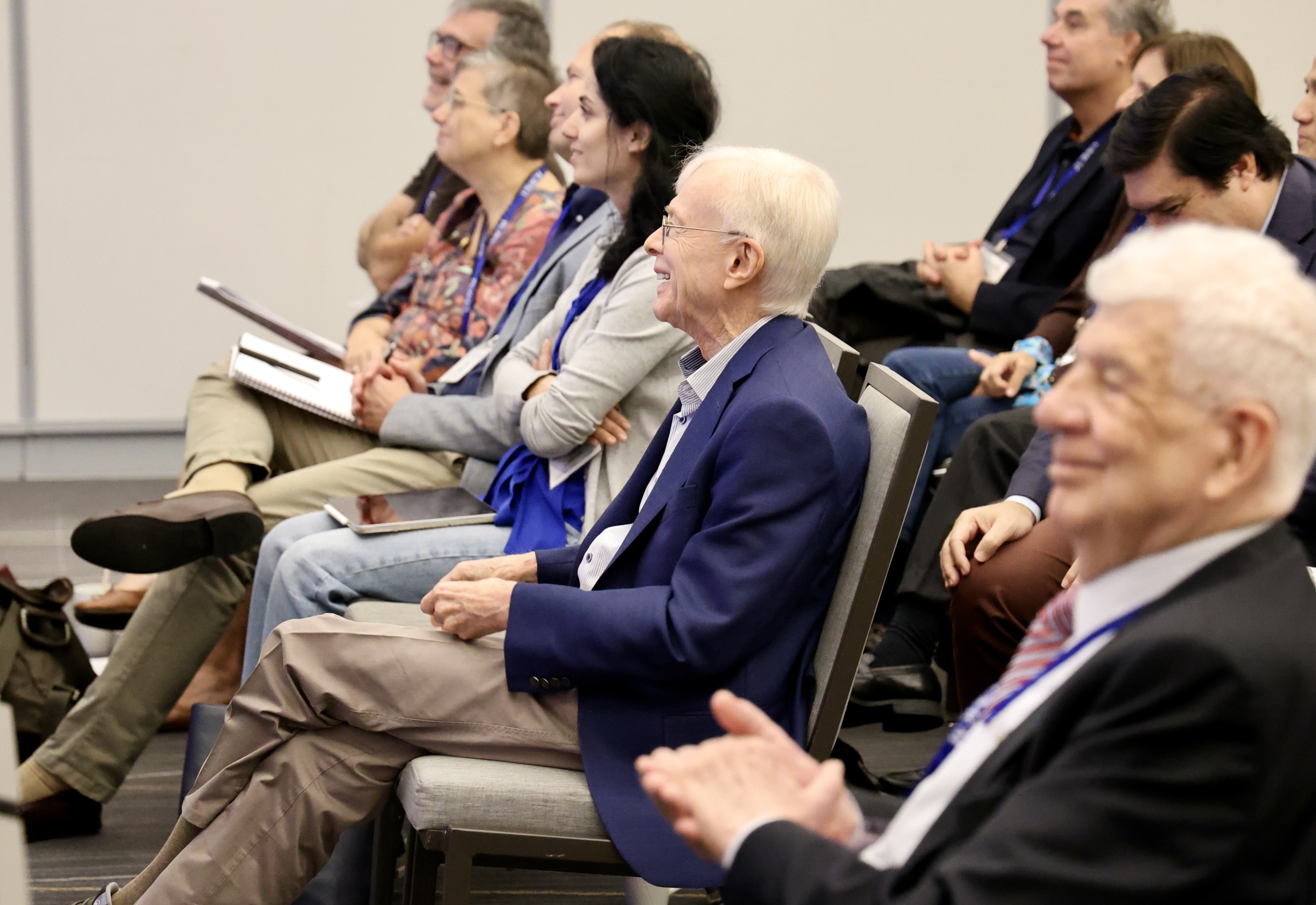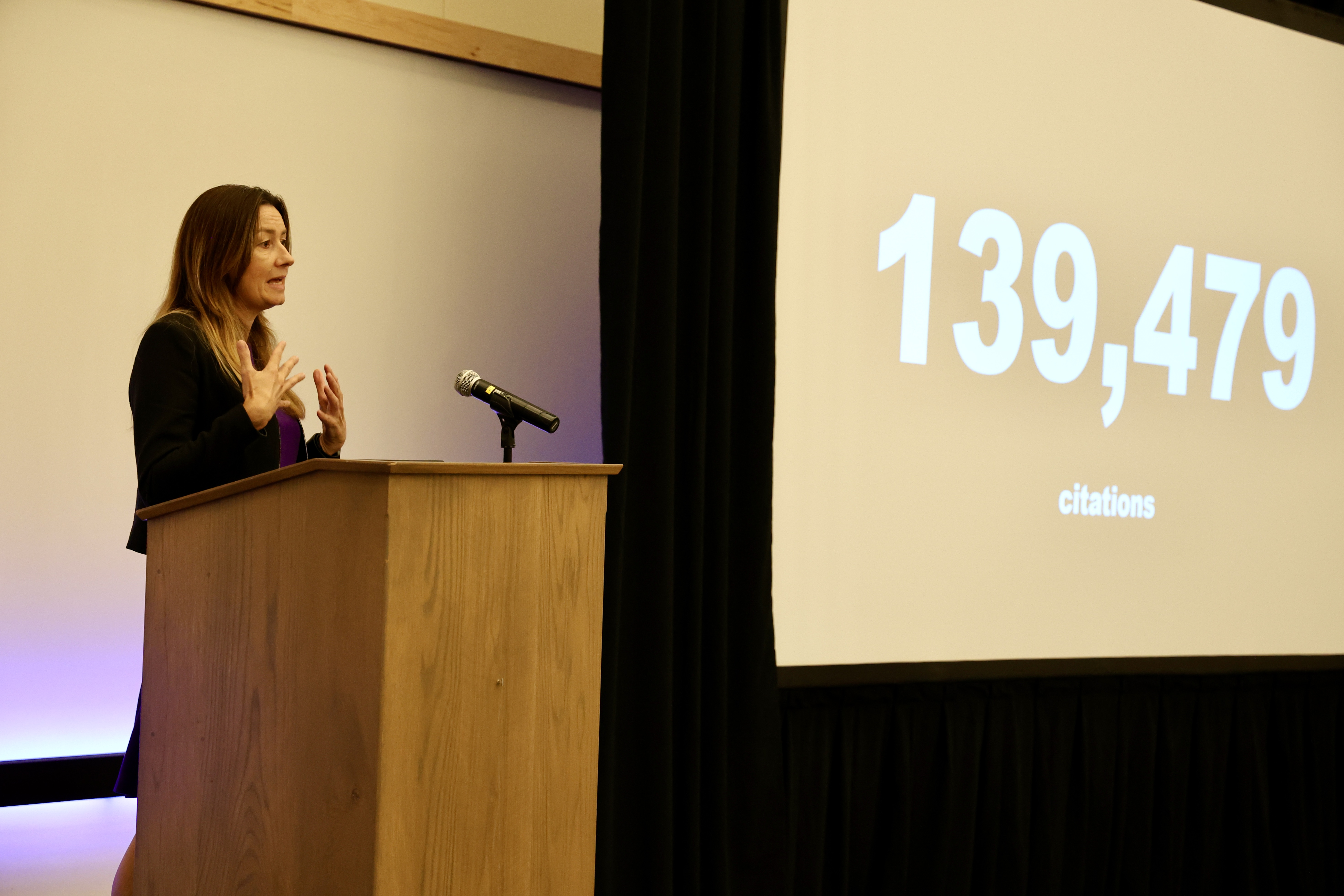The 2023 Advances in Computational Mechanics (ACM) Conference marked a momentous milestone as it celebrated the 80th birthday of Thomas J.R. Hughes, a renowned professor in computational mechanics. The celebration was in conjunction with the thematic conference, held October 22-25, which featured a special track on Computational Fluid-Structure Interaction: Frontiers in Methods and Applications.
Hughes, a core faculty member at the Oden Institute for Computational Engineering and Sciences, has significantly shaped academia and engineering. After completing his Ph.D. at the University of California, where he began his academic career, Hughes subsequently held pivotal positions at the California Institute of Technology and Stanford University. He has been teaching and advising students at The University of Texas at Austin since 2002, where he is also director of the Computational Mechanics Group at the Oden Institute.
More than 250 participants from around the world attended the conference, held at the AT&T Hotel and Conference Center in Austin, Texas, including experts, researchers, and young investigators eager to explore the latest advancements in computational mechanics.
The conference kicked off with some opening remarks from Yuri Bazilevs, Kenji Takizawa, and Tayfun Tezduyar, who organized the event as Conference Chairs.
The opening plenary, delivered by Karen Willcox, Director of the Oden Institute, set the stage for celebrating Hughes's remarkable contributions to the field. Willcox provided a numerical overview of Hughes's prolific career, emphasizing his 49 years in academic positions, 23 memberships in professional and honorary societies, 325 journal publications, and the mentorship of 47 Ph.D. students.
"We are here to celebrate 80 years of Tom Hughes and the incredible impact that he has had," said Willcox. "It goes without saying, and Tayfun said it very nicely, the incredible impact that Tom has had. Every single one of us sitting in the room can trace not one but many threads back to Tom’s work over the years and how it has impacted not just our research but our everyday lives as we think about the impact of the Finite Element Method on the world around us."


